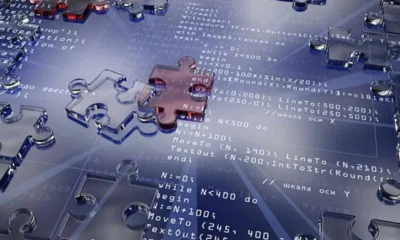GENERAL
Seeing is Believing: The Rise of Visual Displays and the Reshaping of Communication

In the annals of human history, communication has perpetually evolved, driven by the relentless pursuit to convey ideas, emotions, and information with ever-greater clarity and impact. From the primitive gestures and grunts of our ancestors to the sophisticated digital landscapes of the modern age, the trajectory of communication has been marked by a constant quest for efficacy and immediacy. In this journey, one phenomenon has emerged as a transformative force: the ascendancy of visual displays.
The digital revolution has propelled visual communication to unprecedented heights in recent decades. Advances in technology have democratized the creation and dissemination of visual content, leading to a proliferation of images, videos, and multimedia experiences across diverse platforms. From social media feeds to digital displays and virtual reality environments, visual displays have become ubiquitous, saturating our daily lives and reshaping how we interact, learn, and communicate.
Table of Contents
Understanding Display Technology: Types and Mechanisms
The DNA of modern displays can be traced back to the most basic forms of visual representation, but recent decades have seen a technological explosion. Today’s displays range from handheld devices’ liquid-crystal (LCD) screens to organic light-emitting diodes (OLED) used in ultra-thin televisions. Each technology harnesses different physical phenomena – whether manipulating liquid crystals to permit or block light or allowing organic compounds to emit their light – to render vibrant visuals. Beyond their immediate functionality, these technologies represent milestones of human ingenuity, breaking barriers in visual fidelity and energy efficiency.
The Role of Visual Displays in Enhancing Communication
Communal squares of ancient times have given way to the digital arenas of social media and telecommunication powered by visual displays. In modern mass communication, they enable broadcasters to transmit vivid imagery alongside content, enhancing comprehension and retention. Invariably ingrained in our devices, these displays facilitate myriad functions, from video calling to content streaming, shaping our interaction dynamics and keeping us connected in an increasingly digital world.
The Business World’s Adoption of Advanced Display Solutions
Visual displays have shifted from luxury to necessity in the business domain. Engaging digital storefronts with vibrant displays now attracts customers, while corporate boardrooms use interactive screens to fuel collaboration. Advertising has been revolutionized by digital signage, allowing for real-time content updates and more personalized consumer experiences. In the information-heavy workplace, display-based communication systems offer a visual hub for data and analytics, making complex information more digestible and actionable.
Visual Display Technologies in Education
The integration of display technology into the academic arena has opened new horizons for educators and learners alike. The rise of interactive whiteboards transforms static lessons into dynamic discussions, catering to various learning styles. Through e-learning platforms, educators leverage displays to extend their reach beyond physical classrooms to students across the globe, enabling continuous learning irrespective of location or circumstance.


Health Implications of Prolonged Exposure to Screens
The coin of technology has a flip side; the marvels of display tech come with health stipulations. From office workers to gamers, the ubiquitous nature of screens makes eye strain and related issues a growing health concern. However, research and innovation aim to counter these effects. Developments in low blue light technology and ergonomic viewing practices exemplify efforts to safeguard our well-being. Recent findings offer practical measures for minimizing eye strain, advocating for screen time moderation and healthy habits.
Environmental Considerations of Display Manufacturing
As our appetite for cutting-edge displays grows, so does the importance of addressing their environmental footprint. From the extraction of rare minerals to energy consumption and electronic waste, the entire lifecycle of display technologies has ecological consequences. Progressive companies are shifting towards more responsible manufacturing, focusing on renewable energy and recyclable materials to align with sustainability principles and mitigate the adverse ecological impact.
The Future of Display Technology
Peering into the crystal ball of display technology reveals a future ripe with potential. Innovations in flexibility, transparency, and interactivity suggest a paradigm shift is on the horizon. Virtual reality (VR) and augmented reality (AR) are at the epicenter of this transformation, blurring the lines between the digital and the physical and expanding our perceptions of what screens can be.
Navigating the Display Technology Market
In a market saturated with options, making an informed choice in display technology entails carefully analyzing needs, trends, and offerings. Consumer preferences, technological capability, and industry competition fuel a continuous innovation cycle. Stakeholders, from tech enthusiasts to business moguls, keep a vigilant eye on market shifts, anticipating the iteration that best aligns with their vision for leisure, education, or enterprise.
The narrative of visual displays is one of remarkable progression and pervasive influence. As we stand amidst a digital revolution, these technologies are not just passive backdrops but active change agents. Their evolution will continue to be a bellwether for technological potential, societal preferences, and communicative practices. Indeed, the story of visual displays is far from complete, but each chapter promises to revolutionize our interaction with the world anew.
Conclusion
In closing, “Seeing is Believing” invites us to embrace the transformative power of visual displays and recognize their profound significance in reshaping communication. By understanding the mechanisms, dynamics, and implications of visual communication, we are better equipped to navigate the complexities of the modern world and harness the potential of visuals to foster connection, empathy, and understanding across borders and cultures. As we embark on this journey, let us continue to explore, interrogate, and celebrate the extraordinary capacity of visuals to inspire, enlighten, and unite us in our shared human experience.
-



 GENERAL4 weeks ago
GENERAL4 weeks agoUncovering the World of кинокрадко: The Dark Side of Film Piracy
-



 GENERAL3 weeks ago
GENERAL3 weeks agoUnveiling the Art of преводсч: How Translators Bridge Language Barriers
-



 GENERAL4 weeks ago
GENERAL4 weeks agoThe Journey of iamnobody89757: From Anonymous User to Internet Sensation
-



 YOGA8 months ago
YOGA8 months ago4 Person Yoga Poses for Beginners


















